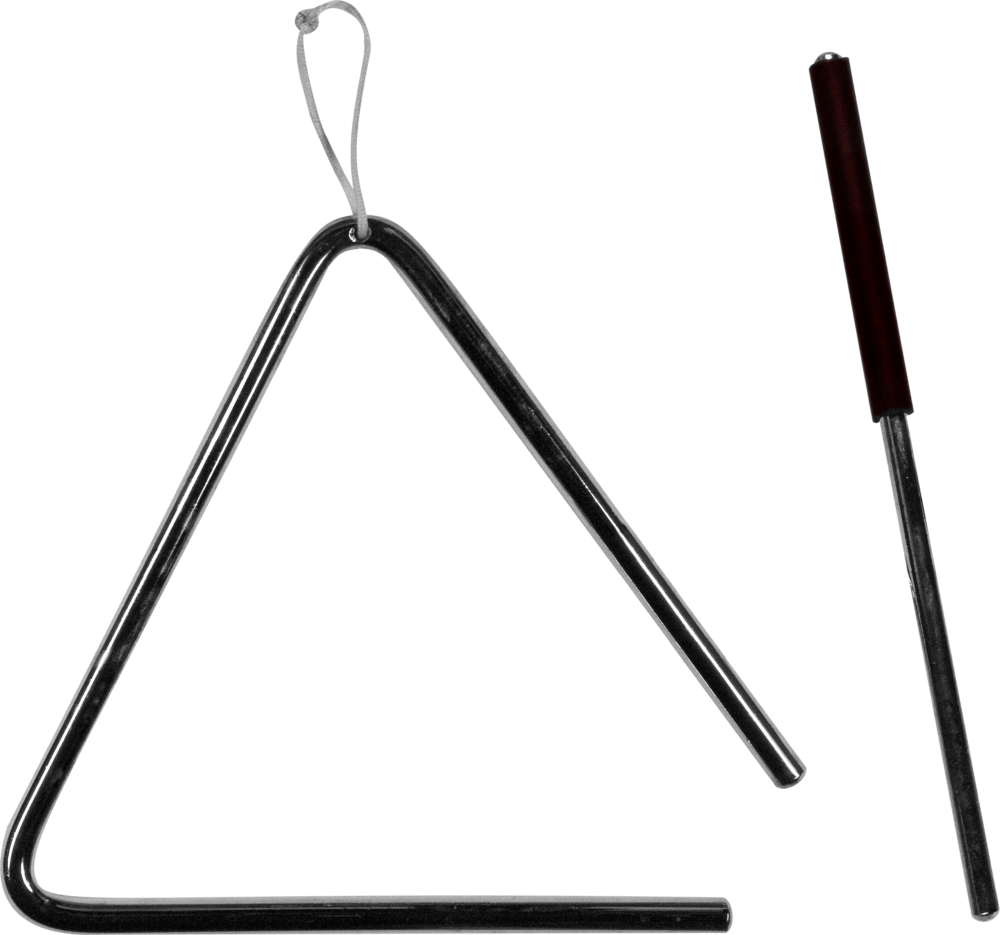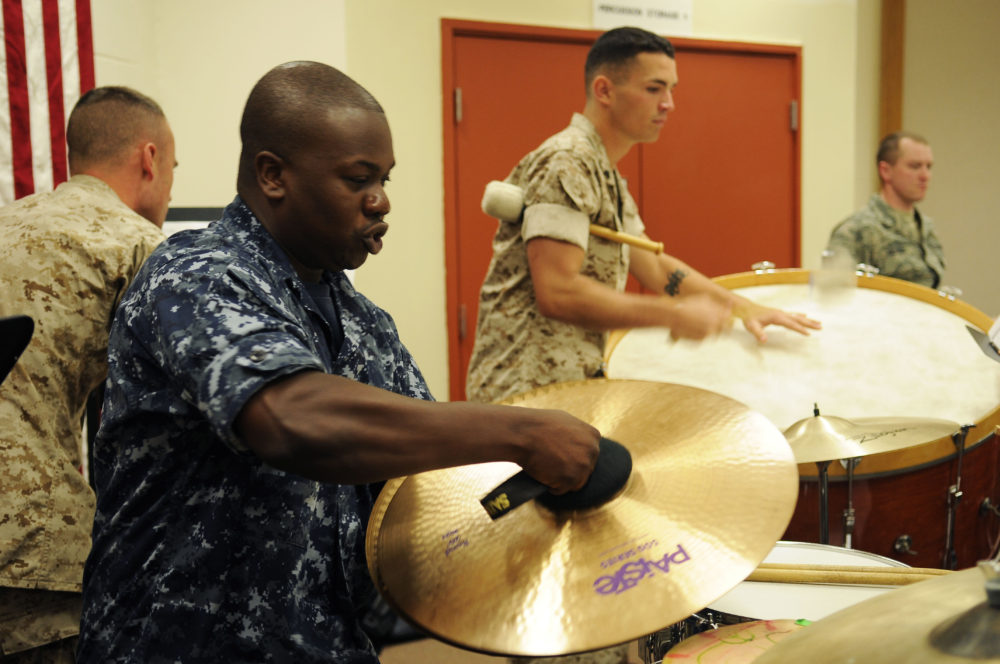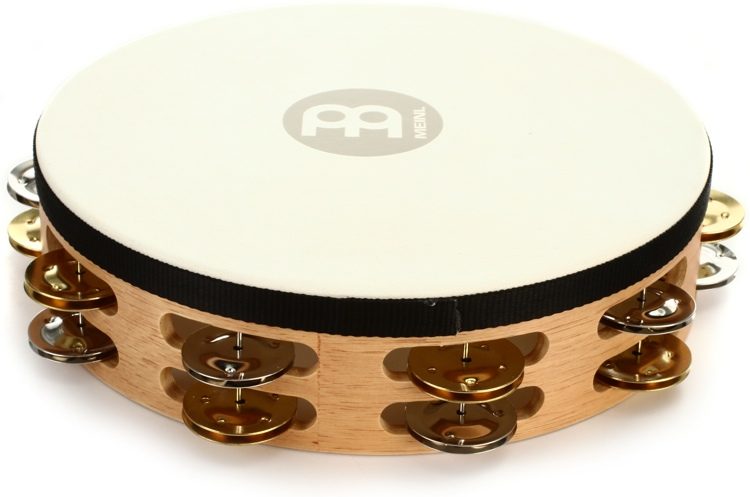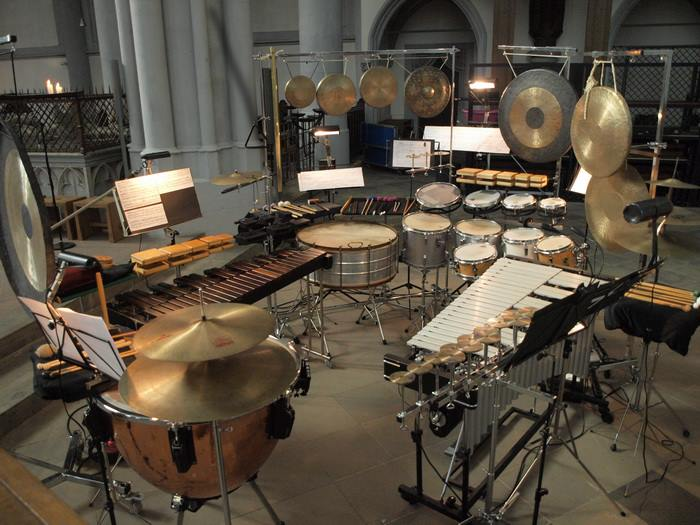Whenever I tell people I play percussion in orchestra, they always ask, “Percussion? Isn’t that just hitting as hard as you can and so everyone hears you?” This sucks, because percussion is actually very difficult, and percussionists, or people who play percussion in an orchestra, practice hard to play only the nicest sounds possible. Every instrument, even the smallest ones, are hard to master, because there are many techniques involved in playing the instruments well.
However, I don’t blame people that think percussion is easy because not everyone knows percussion well enough to say it is hard. So, I will introduce three deceptively difficult percussion instruments:
1. Triangle

The deceptively difficult triangle
The triangle is an instrument that is tiny, and we use triangles often in orchestral performances. This is probably one of the smallest percussion instruments, but there are many tips and tricks for playing it.
The first one is to hit a specific spot on the triangle. In order to play pleasant sounds from triangles, you have to hit at a specific spot, or else the sound it produces will be cracked. However, this specific spot is different in every triangle, and temperature will also affect the specific spot. As a result, percussionists have to find the sweet spot every time, but people without the knowledge and professionalism won’t be able to know the difference.
The last tip is to control the triangle so it does not spin. When we hit something that is hanging, the object will turn. However, the triangle needs to be hanging, because if it doesn’t the instrument will be mute. This is why we have a string attached like the picture shown above. So, percussionists have to practice controlling the angle they hit the triangle to prevent the instrument from turning.
2. Crash Cymbals

Crash cymbals look easy to bang together, but it’s much more difficult than that.
Crash Cymbals are also used often in performances, especially in marches. This instrument is harder than most other instruments.
Unlike the triangle, which is difficult because there is a very particular way to play it, the crash cymbals are hard because it has many ways to play it.
When we play loudly, we have to notice how the cymbals are shaped. The concave shape of the instrument makes it hard to push the two cymbals together because the air pressure inside will force the two cymbals out. This air pressure makes it hard for the player to play nice and loud, When we want to make some noise we have to first crash together the front of the two cymbals and then push them together to create the sound.
However, when we are trying to play lightly and delightfully, we have to make sure the crash cymbal has a small space and push the two pieces hard against each other. That way the sound will be light.
If you can’t imagine how hard it is, you can look at how this percussionist plays the cymbals. He demonstrates many ways to play the cymbal in one video.
3. Tambourines

Not just for shaking and banging.
With a size of only six to eight inches, this thing is incredible. Tambourines are hard to master because of the many ways you can play it, even more than the cymbals.
The reason why it is so hard to master is because of its origin.
In Africa, they have African tambourines where you play the instrument up-side-down. In South America, they also have a Brazilian Tambourine, called a Pandeiro. In Japan, they have Japanese tambourines shaped like a moon. This instrument has so many origins, and each of them developed different ways to play. This is why tambourines are hard to master: even if you’ve mastered the tambourine skills from Japan, you still have a lot more to.
There are too many ways to play it, and many of them are hard to explain. So, just look at this performer playing different classical music. You will notice that the performer uses different fingers, as well as knees and fists to play the tambourine.
—
If you’ve read this article, you now know to stop saying percussion is easy! Percussion is the most complicated part of the whole orchestral band because of how many instruments percussionists know and how complicated each one is, even the ones that look easy. These instruments are easy when you only play it for fun. However, they are all hard when you are trying to get the nicest sounds out of the instruments. So, stop making fun of percussionists – we play more instruments than any person in an orchestral performance.





I’m in 7th grade, playing percussion in my Middle School Band class. My primary instrument is playing the marimba, and at times, I feel dejected and self accusatory (is that a word?) because it seems like the marimba is an easy instrument, and anyone can play it. I know I’m sounding a bit selfish when I say that, but it really puts a dip in your self confidence. But reading this encourages me a bit more. Thank you!
As a 9th grade percussionist who played throughout middle school, marimbas are honestly the thing that 80% of the band struggles with most. Playing marimba well is a difficult skill, personally I’m still pretty bad even after 3 years of playing percussion. I get how you feel though, I play lots of triangle/cymbals/auxiliary percussion and it can definitely feel like it’s ‘easy’. Keep up the marimba, it’s a lot harder than it looks and being able to play mallets well in high school is a godsend.
I myself am a 10th grader as of writing, and at least at my school our director doesn’t generally let people below Junior year on marimbas in any percussion ensembles. It’s something that takes a lot of skill to be good at, and only 1 person every few years gets to break that rule, and even then, its only a year or so. I got to get a marimba part this year, and before me was a sophomore from 4 years ago. Just something that takes a lot of effort and willingness to spend time with it. But once you’re good, it can sound absolutely beautiful in any of the concert ensembles you need